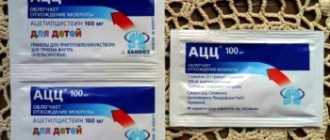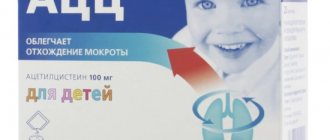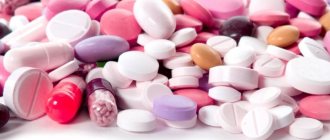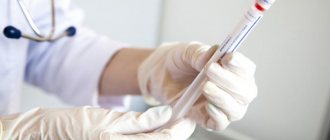N-acetylcysteine (NAC), a supplemental form of L-cysteine, is an effective, safe, and inexpensive treatment option for a range of conditions, including both acute and chronic. Acetylcysteine, the preparations of which we will also present in the article, is a powerful amino acid that is included in many programs for healing the body.
What are the benefits of taking NAC
Not only has it been used for three decades as an effective mucolytic agent (mucus thinner), it is also used to reduce inflammation, protect the liver, and prevent/treat drug toxicity, as well as insulin resistance, infertility due to PCOS, and more.
Pharmacodynamics and pharmacokinetics
about acetylcysteine , what it is and what its mechanism of action is before using the drug. It is a derivative of the amino acid cysteine . The effect of the drug Acetylcysteine is due to the fact that its sulfhydryl group cleaves the disulfide bonds of acidic mucopolysaccharides of sputum . This causes a mucolytic effect. Mucoregulatory activity depends on increased secretion of less viscous sialomucins by goblet cells . Bacterial adhesion on epithelial cells This occurs due to decreased sputum and increased mucociliary clearance .
The disinfecting effect of the drug is due to the action of the free sulfhydryl group, which affects electrophilic oxidative toxins , neutralizing them.
This drug protects cells from free radicals both through direct interaction with them and through the transport of cysteine for the synthesis of glutathione .
The drug is quickly broken down when used internally. But its bioavailability is approximately 10%. The degree of binding to plasma proteins is 50%. The maximum concentration in plasma is observed after 60-180 minutes. The active substance can cross the placental barrier and accumulate in the amniotic fluid. The half-life is 60 minutes. For liver cirrhosis – up to 8 hours.
Excreted mainly by the kidneys as inactive metabolites . Some part is excreted unchanged by the intestines. In plasma it is determined unchanged and also as a metabolite N-acetylcysteine , cysteine ester and N,N-diacetylcysteine .
What is NAC and why should you take it?
N-acetylcysteine (NAC), an additive form of cysteine, is an amino acid that helps the body create and use protective antioxidants.
While cysteine is found in many high-protein foods, NAC is only obtained from supplements or prescription medications.
Because the human body can create acetylcysteine from other amino acids, particularly methionine and serine, it is considered a "semi-essential amino acid." This means there is no daily requirement for NAC that you should get from your diet, but getting more may benefit some people.
What is NAC used for? Some of its most common uses include:
- Boosting Antioxidant Glutathione Levels
- Treating overdose and side effects of acetaminophen (a class of painkillers)
- Breaking down mucus in people with certain lung diseases, including chronic bronchitis
- Helps detoxify the liver
- Protecting the bladder lining and preventing neurological damage caused by certain drugs
- Potential help in preventing colon cancer
Acetylcysteine - drugs, how to take
Indications for use
The medicine is used for difficult sputum , lung abscess , laryngotracheitis , bronchial asthma , catarrhal and purulent otitis , removal of viscous secretions from the respiratory tract after operations, as well as in the case of post-traumatic conditions. In addition, among its indications are interstitial lung diseases , cystic fibrosis , emphysema , pulmonary atelectasis , sinusitis Paracetamol poisoning .
Side effects
The drug may cause adverse reactions such as:
- rash, itching , urticaria , bronchospasm ;
- nausea, heartburn , stomatitis , vomiting, feeling of a full stomach;
- drowsiness;
- fever.
In rare cases, tinnitus, burning at the injection site (if a solution is used), as well as reflex cough, rhinorrhea and local irritation of the respiratory tract when in inhalation .
special instructions
When treating patients with diabetes, it is necessary to take into account that the drug contains sucrose (1 sachet of Acetylcysteine Canon 100 mg corresponds to 0.24 XE).
When working with the drug, you must use glass containers and avoid contact with metals, rubber, oxygen, and easily oxidized substances.
When using acetylcysteine, cases of severe allergic reactions such as Stevens-Johnson syndrome and toxic epidermal necrolysis (Lyell's syndrome) have been very rarely reported. If changes occur in the skin and mucous membranes, you should immediately consult a doctor and stop taking the drug.
You should not take the drug immediately before bedtime (it is recommended to take the drug before 18.00).
In therapeutic doses, the drug Acetylcysteine Canon does not affect the ability to drive vehicles and machines.
Instructions for use of Acetylcysteine (Method and dosage)
Dosages are selected depending on the age and nature of the patient’s disease.
Instructions for use of Acetylcysteine indicate that for children 2–6 years old, a daily dosage of 100 mg 3 times or 200 mg 2 times is usually indicated. The medicine is used in the form of a water-soluble granule. And for children under 2 years of age, a daily dose of 2 times 100 mg is prescribed. In turn, children 6-14 years old are given 200 mg daily 2 times, in the case of cystic fibrosis - 200 mg 3 times. The medicine can be taken in the form of effervescent tablets, capsules or granules.
Adults take 200 mg of the drug 2-3 times every day in any possible form of release.
For aerosol therapy, 20 ml of a 10% solution is sprayed in ultrasonic devices, and 6 ml of a 10% solution is sprayed in devices with a distribution valve. Inhalation is done every day for 15-20 minutes 2-4 times. For acute conditions, therapy lasts 5-10 days, for chronic conditions – up to six months.
With a strong secretolytic effect, it is necessary to suck out the secretion , as well as reduce the frequency of use and dosage of the drug.
Side effects, interactions and risks
Is acetylcysteine safe?
While n-acetylcysteine is safe for most people to take, some drug interactions and negative reactions are possible. Overall, most experts believe that using NAC has potential benefits that outweigh the potential risks.
What are the side effects of NAC
Potential side effects of NAC may include:
- stomach upset,
- diarrhea,
- fatigue and drowsiness,
- increased sweating,
- skin rash.
Acetylcysteine may not be safe for people with asthma, bleeding problems, or those taking nitroglycerin, including blood thinners and some blood pressure medications. If this applies to you, consult your doctor before using NAC supplements to discuss possible interactions.
Does NAC affect the kidneys and liver?
In very high doses, any supplement has the potential to cause liver or kidney problems - however, as explained above, NAC is generally taken for the purpose of protecting the liver and kidneys.
Final Thoughts on N-Acetylcysteine
- N-acetylcysteine (NAC), an accessory form of cysteine, is an amino acid that helps the body create and use protective antioxidants, especially glutathione (called the “master antioxidant”).
- N-acetylcysteine protects the liver and kidneys and improves detoxification pathways, as well as having anti-inflammatory effects. This is why N-acetylcysteine injections are used to prevent drug overdose and toxicity.
- Other benefits include treatment of respiratory conditions, PCOS, infertility, metabolic syndrome and certain types of cancer.
- N-acetylcysteine is not available in foods, but cysteine is. NAC is only obtained from taking supplements or over-the-counter medications.
- The standard dose of acetylcysteine is 600 to 1800 mg per day, although higher doses, about 2000 mg/day, have also been found to be safe.
Interaction
The combination of the drug with oral administration of semisynthetic penicillins , cephalosporins , tetracyclines (with the exception of Doxycycline ), aminoglycosides requires a two-hour interval. Acetylcysteine with other antitussive medications can cause dangerous mucus stagnation. When combined with this drug, the vasodilating effect of Nitroglycerin .
Acetylcysteine analogues
Level 4 ATX code matches:
Mukolik
Abrol
Ambrosan
Bronchorus
ACC 100
ACC 200
ACC Long
ACC
Mukolwan
Lazolvan
Bromhexine 8
Bromhexine 8 Berlin-Chemie
Bromhexine
Bronchobos
Carbocisteine
Erdomed
Pulmozyme
Pectolvan C
Halixol
Ambrobene
The following common analogues of Acetylcysteine are sold:
- Vicks Active ExpectoMed;
- ACC;
- N-AC-ratiopharm;
- N-acetylcysteine;
- Acestine;
- Acetylcysteine SEDICO;
- Mukobene;
- Mukonex;
- Fluimucil;
- N-AC-ratiopharm;
- Exomyuk 200;
- Mucomist.
They are all similar in their action, but may have some application features.
Acetylcysteine price, where to buy
The price of Acetylcysteine depends on the form in which the drug is produced. Powder for diluting a solution of 200 mg (usually 20 sachets per package) costs about 630 rubles. The price of Acetylcysteine in tablets is at least 60 rubles. In turn, some online stores sell capsules with the same name, the cost of which can be 770 rubles and more.
- Online pharmacies in UkraineUkraine
Pharmacy24
- Acetylcysteine Astrapharm 200 mg No. 10 sachet TOV Astrapharm, Ukraine
29 UAH order - AC-FS 200 mg N20 Acetylcysteine tablets Pharma Start TOV, Ukraine
34 UAH order
How long does it take for NAC to take effect?
This depends on the condition it is being used to treat, your personality and the dose you are taking.
It can work for several hours to help treat overdose and toxicity when administered intravenously. In other conditions, the effect may be cumulative and take several months to occur, although it may work for several weeks in some people.
To develop an individual program for improving the body’s health, we suggest contacting us at health-coaching.
When to take NAC - morning or evening
Acetylcysteine preparations can be taken at any time of the day that is most convenient for you. NAC is available in tablets of 500, 600, 750 and 1000 mg. It is recommended to split the dose and take it two or three times a day to see results. So consider taking it once in the morning and once in the evening.
Since it is an amino acid, it is best to take it 20-30 minutes before meals.






